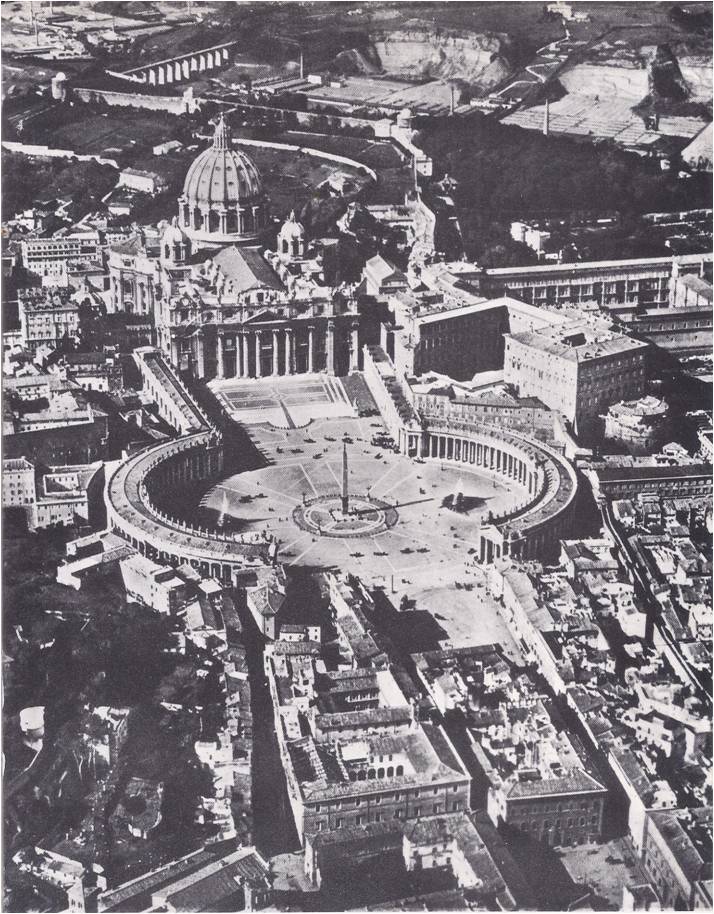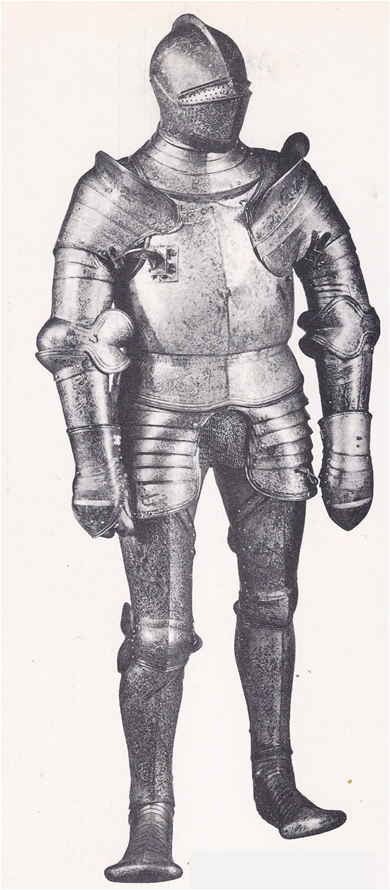Through the bustling market-towns of the Low Countries passed the traders, goods and gold of all Europe. Here the luxuries of Asia — spices‚ silks, jewels and perfumes — were exchanged for the practical products of the North — woolen cloth and utensils of iron and copper and wood. In shops and inns, wily Italian shippers and bankers bargained with the solemn, solid merchants from Germany and Flanders — and made the profits that built the Renaissance cities of Italy. In tall-spired cathedrals, in palaces, guildhalls and universities, wandering Italian artists discovered works of art and scholarship as great as any they had known at home. The men of the North had needed no outsiders to teach them about money-making or magnificence. Long before the Renaissance spread across Europe from Italy, they had turned to business, formed the guilds, grown rich and invested their gold in displays of splendour. Flanders was the center of a great cloth-making industry. Germany was the home of expert craftsmen—armourers, goldsmiths and engravers. In Haarlem in the Low Countries, a jack-of-all-trades named Laurent Coster had first thought of using movable carved letters to form words and sentences from which pages could be printed. About 1440, Johann Gutenberg and his assistant Peter Schoeffer had put Coster’s idea to use, made the first printed books and brought about a revolution in learning that changed the history of the world. The northern artists also were inventive and their guildsman patrons kept them as busy as the artists of Italy. Of course, their tastes were not Italian and their paintings and statues, like their ideas, were very different from those in Florence, Milan and Rome. When Masaccio was first teaching the Florentines how to paint figures that “stood on their feet,” the wool merchants of Flanders were buying paintings …
Read More »Rome, the City of the Pope 1492-1564
In 1492, young Giovanni de’ Medici bade farewell to his father, Lorenzo the Magnificent and left Florence to take his place in Rome among the cardinals of the church. At sixteen, Giovanni was a nobleman in the court of the pope, a man of influence and power. That was fortunate, for when Giovanni was eighteen, his family’s power collapsed. The Florentines drove the Medici from their city and Giovanni, who had come home for a visit, narrowly escaped being stoned by the citizens who once had cheered him. As he crept out of the city, disguised as a poor friar, he swore that he would one day return in triumph. First, he thought, he must look to his career in the church. Whatever the Florentines did, he was still a cardinal and in the papal court there were many ways for a clever man to rise to greatness. When he had crossed the Tuscan border, Giovanni threw off his humble disguise, put on the crimson robes and red hat that marked him as a “prince of the church” and took the road that led to Rome. The young cardinal was not alone in hoping to make his fortune in Rome. Indeed, the old city teemed with ambitious men of every sort — scholars and scoundrels, diplomats and spies, millionaires and fortune-hunters, priests and professional murderers. Rome had known every sort of splendour and evil. Memories of unmatched elegance and unbelievable cruelty lingered in the ruins of temples and arenas built by ancient emperors. Grim fortress-houses were reminders of an age of violence, when the bloody feuds of rival clans of nobles had turned Rome into a ghost city. Now there were new mansions, palaces and lofty churches. A new magnificence had come to Rome with the gold that poured into …
Read More »Milan, City of Splendour and War 1277-1515
Milan’s most important business street had no displays of velvet cloaks, bright bolts of silk, or cloth-of-gold. It was a dusty, smoky street, made hot by the fires of forges and filled with the din of hammers shaping steel — the Street of the Armourers. Milan made the finest armour in the world. In the Middle Ages, the crusaders came there for chain mail and it was said that entire armies were outfitted in a few days. Later, the fashions of war changed. Knights wore heavy suits of jointed steel plates that covered them from head to toe and elegant helmets, gilded, engraved and topped with plumes. The Milanese armourers became artists at molding and carving metal, their sales men were welcomed in every court in Europe and the Street of the Armourers became busier than ever. Armour was the right specialty for Milan, for the city and its rulers seemed to specialize in everything warlike and violent. The dukes of Milan were iron-fisted tyrants, who loved displays of splendour and sometimes cruelty. They did not hide their power like the cautious Medici in Florence. Indeed, they made a show of their strength and wealth. It discouraged invaders, rivals and over-ambitious relatives. The dukes’ domain was rich and as large as any state in Italy. The fertile plain of Lombardy, which lay between the Apennine Mountains and the Alps, attracted as many would-be conquerors as farmers. The prosperous little Lombard towns that the dukes overpowered were quarrelsome and the noblemen of Lombardy never stopped stirring up revolts. To hold on to their dukedom, the rulers of Milan employed the toughest warriors in Italy. They frightened their subjects with harsh laws, rewarded them with pageants and impressed them with magnificent palaces. Splendour, fear and power — these were the specialties of …
Read More »The Sound of Bells and Trumpets in Europe 1300 – 1600
Bells and trumpets sounded across Europe in the time that men would call the Middle Ages. Knights in glistening armour rode forth to serve God and their kings; life was like a stately procession winding through a landscape marked by castles and cathedrals. Each man knew his place. He was a prince, a knight, a squire, a priest, a craftsman, or a serf. He wore the clothes that belonged to his rank — the armour and family emblems of a nobleman, the robes of a churchman, or the rough wool jerkin of a serf. He lived according to an age-old set of rules — the knightly code of chivalry, the vows of a monk, or the duties of a serf to the lord who owned the land he farmed. Such, it was said, was the will of God. It seemed impossible to imagine that life could ever be any different and indeed, almost no one remembered that it had been different in the past. In Athens, once the most beautiful and exciting city in the world, the palaces and temples of the Greeks were vacant ruins, overgrown with weeds. In Rome, the vast arenas and the Senate House were silent. The Forum, the ancient gathering place of Roman throngs and center of the greatest empire man had known was now a cow pasture. Hidden away in the castles and cathedral libraries, manuscripts that held the science, poetry and wisdom of two thousand years of life and discovery lay dusty and unread. All this, too, it was said, was the will of God. To the men of the Middle Ages, ruins taught a lesson: life was short, the works of mankind soon fell to dust and a man’s time on earth should be spent only in preparing for death and what came …
Read More »



